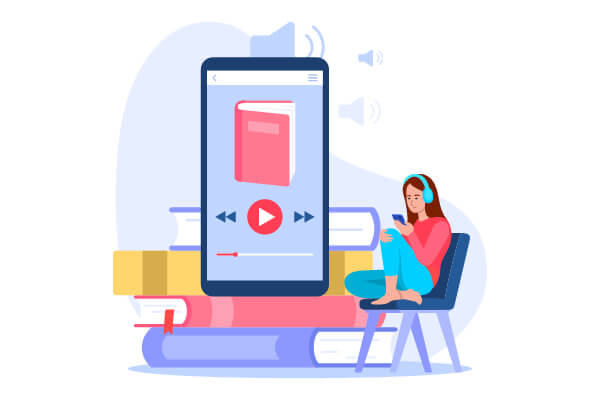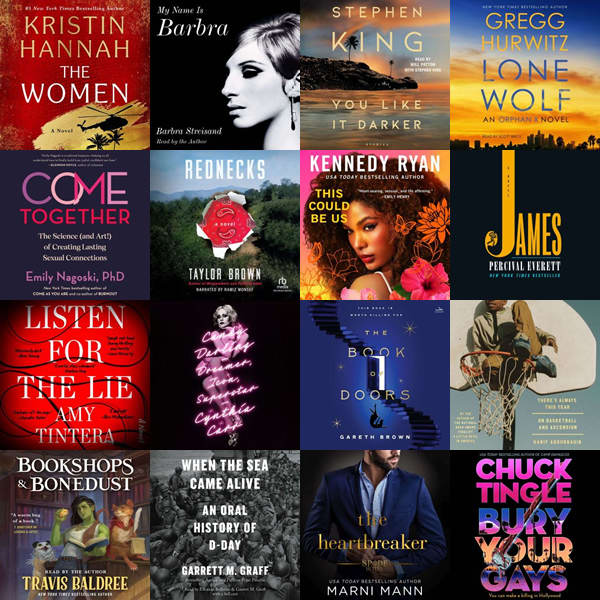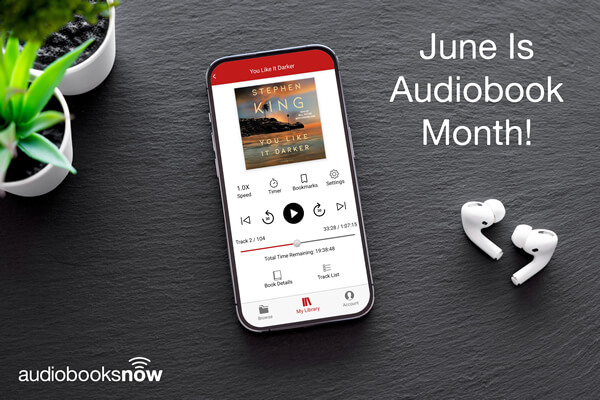Cyber Monday is here! Take an additional 5% off your entire order with code: CM525 at checkout today and tomorrow only, ends December 2nd. Choose from over 420,000 titles available now.

Digital audiobook related news and information

Cyber Monday is here! Take an additional 5% off your entire order with code: CM525 at checkout today and tomorrow only, ends December 2nd. Choose from over 420,000 titles available now.


In today’s fast-moving digital landscape, audiobooks have become an essential part of how readers consume stories and information. For authors, getting their audiobooks into the hands (and ears) of listeners is more important than ever. Whether you’re hosting a book tour, speaking at a conference, or launching a promotional campaign, bulk distribution of your audiobook can be a game-changer.
That’s where AudiobooksNow comes in.
Authors often think of audiobook distribution as a one-at-a-time retail process. But what if you could provide dozens, hundreds, or even thousands of copies to fans, clients, or event attendees—all at once?
Bulk audiobook distribution allows you to:
AudiobooksNow makes it easy for authors and publishers to purchase and distribute their audiobooks in bulk through custom download codes and direct access links.
Here’s how it works:
Authors can work directly with AudiobooksNow to order bulk copies of their audiobooks. Whether you need 10 or 10,000, we tailor the order to fit your goals and budget.
Each audiobook can be distributed using unique redemption codes. These codes can be printed on bookmarks, postcards, or emailed to recipients—perfect for giveaways and marketing campaigns.
Listeners simply enter the code on AudiobooksNow.com or in the AudiobooksNow app to instantly access and download the audiobook—no subscription required.
We understand authors’ needs. That’s why we offer:
Here are a few ways authors are already using AudiobooksNow for bulk audiobook sharing:
If you’re an author looking to amplify your reach and give your audiobook the exposure it deserves, AudiobooksNow’s bulk distribution tools can help. Whether you’re self-published or part of a publishing team, we’re here to support your promotional and outreach goals.
Contact us today to learn more about how we can help you deliver your audiobook—on your terms, in your voice, to the audiences that matter most.
We are celebrating Audiobook Month with huge discounts on thousands of audiobooks! Visit our Specials page now.


June is celebrated as Audiobook Month primarily to raise awareness about the joys and benefits of audiobooks. Here’s why June was chosen and what the month represents:
June is Audiobook Month because it aligns with summer reading trends, helps promote the audiobook industry, and celebrates the unique ways audiobooks make stories more accessible and enjoyable for a wider audience.

Audiobooks are an excellent way to enjoy books while multitasking, whether you’re commuting, working out, or just relaxing. AudiobooksNow is a popular platform that offers a vast collection of audiobooks, including bestsellers and classics. But did you know that you can listen to audiobooks for free on AudiobooksNow? In this guide, we’ll walk you through the steps to access free audiobooks on the platform.
To begin listening to free audiobooks on AudiobooksNow, you’ll first need to create an account. Simply visit the AudiobooksNow website or download their mobile app. Signing up is free, and it only takes a minute.
AudiobooksNow offers a 30-day free trial of their Club Pricing Plan. During this period, you can enjoy discounts on audiobooks and even get a free premium audiobook to listen to (select titles only). Be sure to check which titles are eligible and make the most of the trial period.
AudiobooksNow has a dedicated section for free audiobooks. You can find a selection of titles that are completely free to listen to without any subscriptions or payments. Simply navigate to the “Free Audiobooks” section on their website or app and browse through the available options.
The platform frequently offers limited-time deals on audiobooks, including free promotions on select titles. Keep an eye out for these special promotions by checking their website or subscribing to their mailing list for updates.
AudiobooksNow provides access to a variety of public domain books, which are free to listen to. These include classic literature, such as works by Shakespeare, Jane Austen, and Mark Twain. Since they are no longer under copyright, they can be enjoyed at no cost.
AudiobooksNow provides multiple ways to enjoy free audiobooks, whether through their free book selection, limited-time promotions, or public domain titles. By taking advantage of these opportunities, you can build an extensive audiobook library without spending a dime. Happy listening!
Have you discovered any great free audiobooks on AudiobooksNow? Share your favorites in the comments below!
Congratulations to the 2025 Audio Award Winners and finalists! You can find these award winning audiobooks and more at AudiobooksNow.


We are often asked what the difference is between children’s audiobooks and young adult audiobooks. Children’s audiobooks and young adult audiobooks are two distinct categories of literature, each crafted with its audience’s age, developmental stage, and emotional maturity in mind.
Children’s audiobooks are designed to spark curiosity and imagination in younger minds. These audiobooks tend to have themes that revolve around simple, universal ideas like friendship, adventure, and moral lessons. The language is accessible, and the plots are straightforward, reflecting the world through the lens of youthful wonder. Normally, children’s books are full of illustrations, so talented narrators must create those pictures in the child’s mind using only words.
In contrast, young adult (YA) audiobooks cater to the complex emotional and intellectual landscapes of teenagers. While still rooted in compelling stories, YA literature delves deeper into the complexities of identity, love, societal pressures, and personal struggles. The language is more sophisticated, and the themes are more mature—dealing with real-world issues that resonate with a teen’s journey toward adulthood. YA audiobooks often tackle darker, more intense subjects like mental health, social justice, and personal loss, with characters who wrestle with their place in the world. Unlike children’s audiobooks, YA novels are less reliant on visual cues, focusing instead on character-driven narratives and emotional depth.
In short, children’s audiobooks are typically aimed at younger kids with simpler stories, while young adult audiobooks tackle more complex themes suited for teens. The tone and writing style reflect the intended age group and their cognitive and emotional maturity.

Give any audiobook as a gift this holiday season. Visit our Gift Center for all the available options

In recent years, the rise of artificial intelligence, and advanced digital technologies has led to the development of many innovative tools and techniques in the realm of storytelling. One of these innovations is auto-narration, a concept that is quickly gaining ground, especially in the fields of literature
But what exactly is auto-narration, and how does it work? Let’s take a closer look.
At its core, auto-narration refers to the process in which a system, typically powered by artificial intelligence (AI), narrates a story without human intervention. The idea is that a machine, rather than a human storyteller, assumes the role of the narrator, creating an experience that mimics traditional storytelling.
While auto-narration systems can vary in complexity, they often rely on algorithms that process large volumes of data—such as books—to produce narratives that are coherent, engaging, and contextually relevant.
The process behind auto-narration involves several components of AI technology, including:
Auto-narration is an innovative and rapidly developing field that is reshaping how stories are told and consumed. From personalized educational experiences to immersive storytelling, the potential applications are vast. As AI technology continues to advance, auto-narration will likely play a significant role in how we interact with content, communicate, and even experience the world of literature.
We are putting thousands of audiobooks on sale in June to celebrate Audiobook Month! Visit our Specials page now.
